Poking around in the yard late last, I was silently lamenting the fact that the mantises (as well as nearly all other critters of interest) seemed to have moved on – it’s been days since I’ve seen any sign of them, but I’m not at all surprised, because the hot and dry weather has been taking its toll on the plants and so the favored lairs of the mantids are not very impressive right now. But then I spotted a juvenile Chinese mantis (Tenodera sinensis) hanging out on the tall unidentified grasses that populate the backyard.
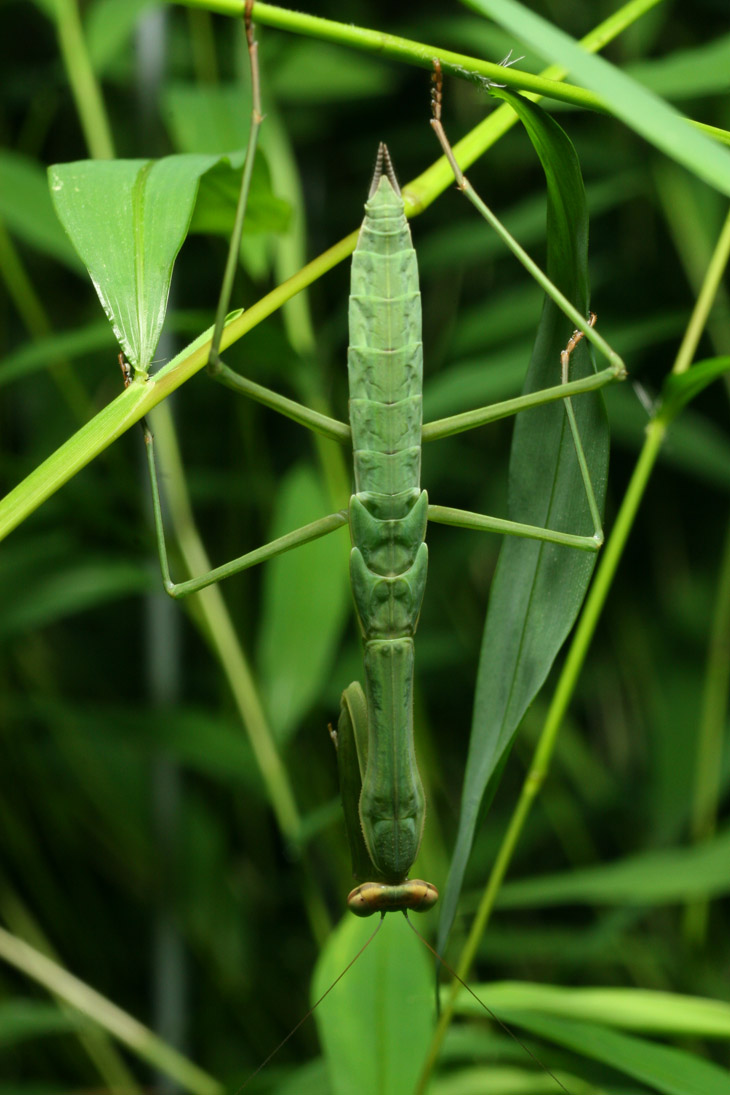
Curiously, however, its eyes were green; they’re usually black at night, at least once they get past a few weeks old. In fact, the only time I’ve seen a mantis with green eyes at night was the one that was about to molt. Aha! I hadn’t yet captured the beginning of this process, when the split appears along the back and the mantis begins working its way out of its old exoskeleton. Leaping into action, I rushed inside to get the macro rig, which involved finding out I only had one set of charged batteries, and so I had to run the AC power source for the flash unit, and this took a little time. I readily admit, it’s pretty ludicrous what we allow ourselves to get anxious over; I can be fairly mellow in traffic, but agitated over the idea of missing this item on my photo list because I wasn’t prepared. However, by the time I got ready, the mantis was still in the same position and showing no signs of impending molt, beyond what I’d already seen.
While doing all this, I noticed another mantis less than a meter away, this one showing the fashionable eye color of the season.
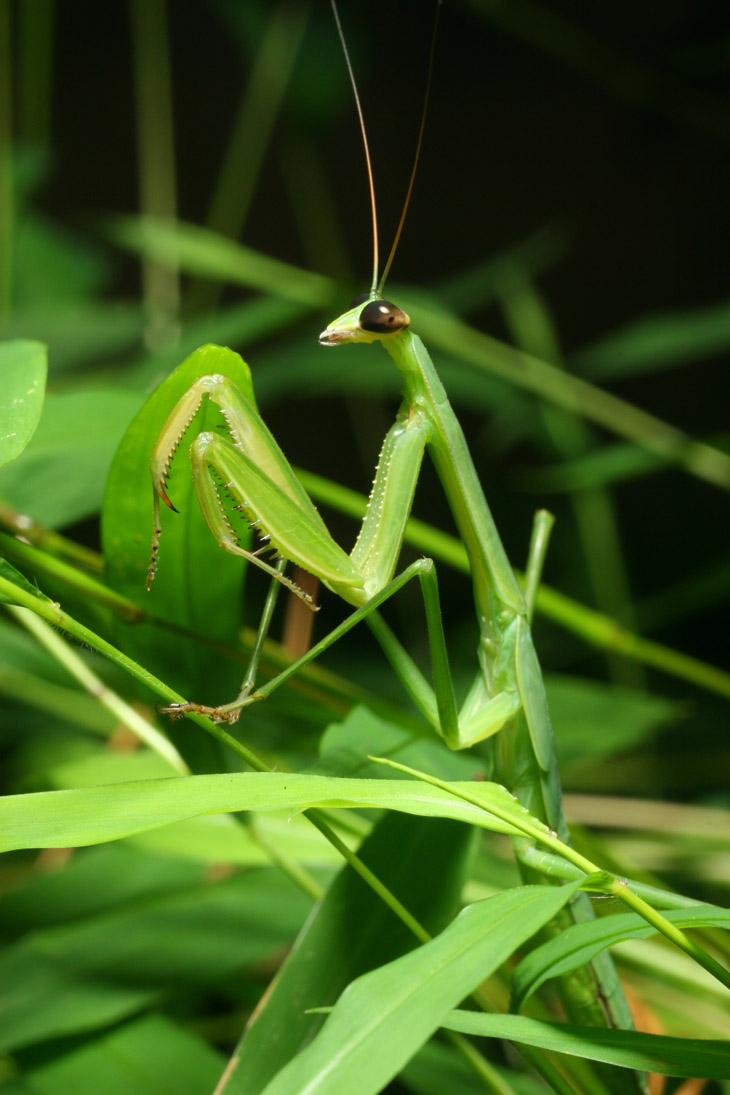
So, I got a chair out and got comfortable. Every few minutes, I would turn on my headlamp, using the less obtrusive green mode, and check progress, and then turn it off and sit patiently in the dark as my watch counted down the three minute intervals.The second mantis was slowly meandering around the plants, while the first remained head down and largely motionless, though occasionally displaying a tiny fidget as if the slideshow presentation was starting to run too long. I took this to mean that it was trying to induce the first break in its chitin and begin the emergence.
Eventually I lengthened the intervals to four minutes. After a while of this, I lengthened the wait between checks still further to ten minutes, allowing myself to go inside and get something else done. And yet, with each check, nothing at all had changed. After two hours, I was beginning to get seriously tired and knew I couldn’t stay awake much longer. I was quite aware that the checks with the headlamp might have been spooking the mantis, making it think that the conditions weren’t safe enough to molt in, but then again, it hadn’t moved either; I would have thought that, if it didn’t feel safe, it would move to another location rather than just wait it out. And what else was I going to do? I had no idea how long after they show the first signs that a mantis typically begins to molt – I just know that I’ve missed the crucial point before (see that link above.) Take too long between checks, and I could easily miss that opening stage. Yet, the mantis looked completely unchanged from when I’d first spotted it two hours previously.
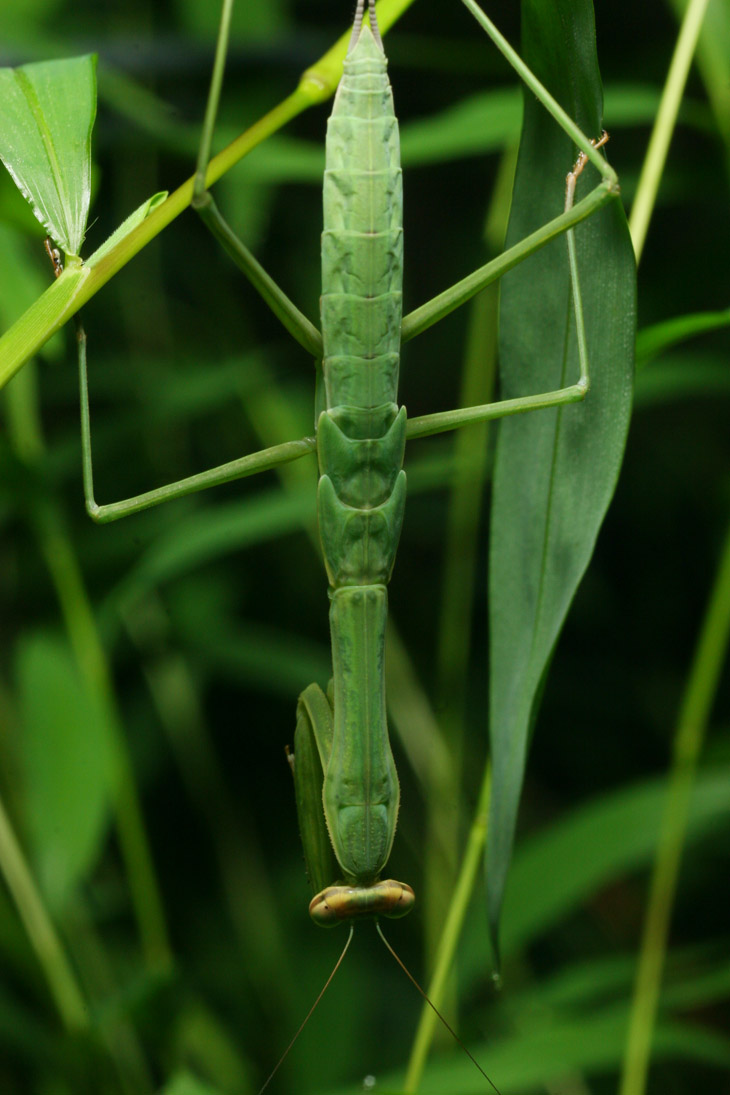
But there’s a limit, and I’d reached mine for that evening. I packed up the kit and went in to get some sleep. First thing the next morning (actually, that same morning, since I’d wrapped up after 2 AM and we’re still on the same day as I type this,) I went out to check on my model, which was, of course, nowhere to be seen. I half-expected to find the molted exoskeleton attached to the same leaf, but it wasn’t there either – until I spotted it resting on the leaves below. So much for patience and dedication winning out in the end.
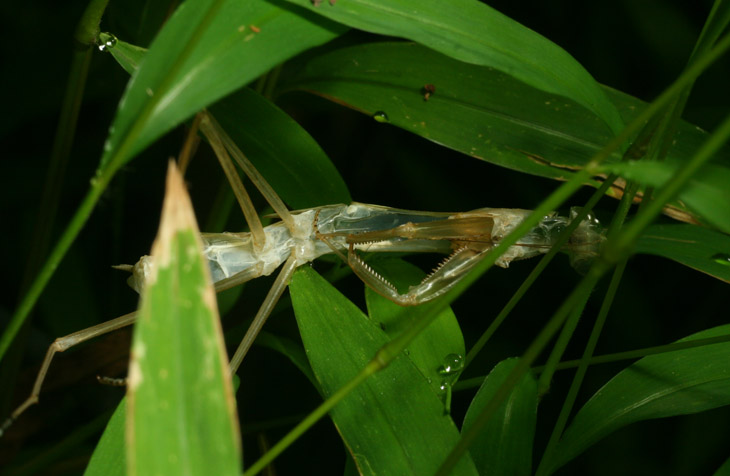
Now a bit of perspective. While waiting, I would occasionally glance around at the surrounding plants, and shot a few pictures of juvenile katydids on the plants opposite the mantis. Atop one leaf, a meadow katydid (tribe – yes, tribe – Conocephalini) sat facing away from me in too awkward a position to try and photograph. However, as I decided to give up on the mantis, I took one last peek around, and what I believe to be the same katydid had moved to the underside of the leaf and was well along in its own molt.
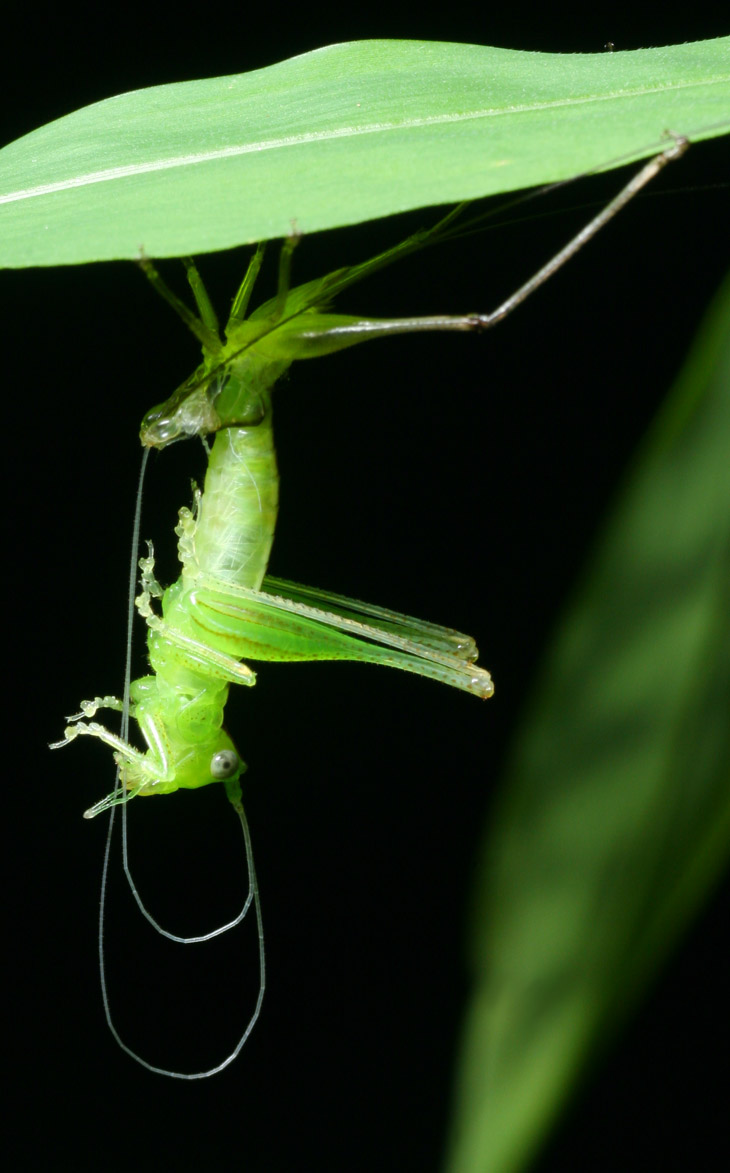
Now, the brilliant and translucent green of the new exoskeleton is enough to make this image, but there’s an additonal detail that’s pretty cool: it’s using its mouth to draw the antennas free from the molted chitin, not particularly surprising given how ridiculously long the antennae are. But yeah, the whole time I was watching the mantis without any progress at all, this one had taken up position and nearly completed its own molt. I’m guessing this one is a male, and the mantis a female…
And yes, after doing several shots of this one, I did not neglect one final check on the mantis. You were hoping for a little irony there, weren’t you? But no, just frustration, though I can’t discredit the katydid pics at all. At least I got something out of the efforts…



















































